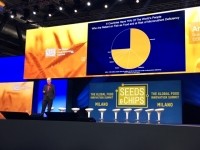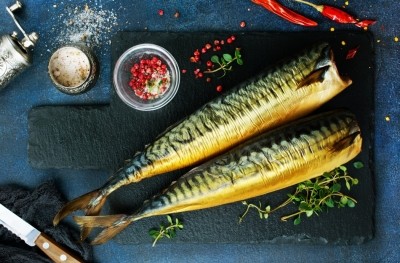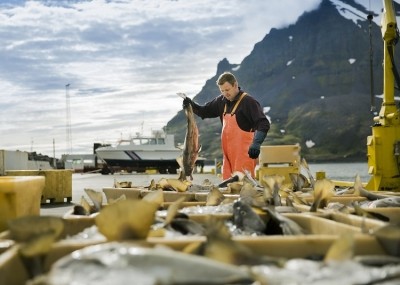Oceana CEO: Why not use 71% of the planet to feed the future?

International advocacy organisation Oceana predicts that by rebuilding global fish stocks, one seafood meal per day could be eaten by 1.1 billion people, forever.
This figure is significant, given that the United Nations estimates the current world population of 7.3 billion to reach 8.5 billion by 2030, and 9.7 billion in 2050. To feed 9.7 billion mouths, food production will have to increase by 70% from 2007 figures.
With land and freshwater resources scarce, Oceana’s CEO Andrew Sharpless says we need to think about “using 71% of the planet to feed the future.
“Marine fish need to be a much bigger part of the plan to feed the world than they are now.”
A three-step plan to ‘put more fish in the ocean’
Oceana has been fighting to restore marine biodiversity and ocean abundance since its creation in 2001.
One of its objectives is to put right the common misunderstanding that wild marine fish stocks are depleted and cannot be restored.
Indeed, global fish catch figures soared from the 1970s to 1990s, reaching a peak of 86 million tonnes in 1996. This has since dropped by 6%, and is expected to decrease by an additional 8% in the coming years.
However, Sharpless is convinced that by calling industry, policymakers and consumers to action – to focus on three priority areas – “we can refill marine fish to high levels of abundance”.
Oceana: To put more fish in the ocean, we need to:
1. Stop overfishing
- Overfishing, in simple terms, means catching fish at a faster rate than they can reproduce naturally.
- Overfishing can be caused by illegal fishing, weak monitoring and enforcement measures, destructive fishing methods, and fishing in areas where fish grow and spawn.
- In European seas, 65% of fish populations are overfished.
- In the Mediterranean Sea, 96% of fish populations are overfished.
To eliminate overfishing, science-based quotas must be established, fish habitats must be protected, and bycatch reduced.
2. Curb pollution
3. Increase transparency to deter illegal activity
“Technically it’s pretty simple. You stop overfishing, you reduce pollution and you increase transparency to deter illegal activity,” explained Sharpless. “Set and enforce scientific quotas, protect the habitat, reduce bycatch, and we’ll have a more abundant ocean.”
At the Seeds and Chips conference in Milan this week, Sharpless cited examples of overfishing and stock depletion that dramatically improved with the implementation of moratoriums and bycatch restrictions.
Examples include Northwest Atlantic Redfish, US Georges Bank Haddock, and Northeast Arctic Atlantic Cod – the last which benefited from an imposed discard ban.
“This happens all over the world. If you intervene after years of overfishing, the fish come back…In 10 years you can see a complete recovery.”
”Rebuilding global fish stocks could: result in harvests of wild marine fish of up to 94 million metric tonnes. If all food is eaten as food, that means a fish meal each day for 1.1 billion people. Or 425 million more meals than if we continue with ‘business as usual’” – Oceana CEO Andrew Sharpless
Policymakers must intervene to set catch limits, argued Sharpless. “This is because fishery management, unlike so many of the world’s big problems, are not subject to the problems of international governance. It can be done country by country.”
Coastal nations are therefore empowered to make change through management, pollution control and transparency. Interestingly, the majority of fish supply is relatively concentrated in terms of governance.
Nine countries in the European Union control two-thirds of the world’s fish supply in their own oceans, and 90% of the world’s fish supply is in just 29 countries and the European Union – with China leading the charge, followed by Peru, and Indonesia.
“There is a big opportunity not being seized”
As no freshwater is required, nor land resources, the sustainability opportunity associated with producing saltwater fish is clear.
In addition, from a greenhouse gas perspective, livestock farming produces a significantly higher level than marine fish – taking into account the diesel required to catch seafood in open water.
The nutritional benefits of recovering wild fish stocks also present a major opportunity. The potential health impacts of switching from red meat to fish include reducing the risk of Type II diabetes by 25%, heart disease by 21%, and cancer by 13%, said Sharpless.
“Fish provide micronutrients that are essential to human health. And if you look at the micronutrient factories in the context of the global fish productive countries, you see there is a nice overlap.
“This is a big opportunity that is not being seized.”


























